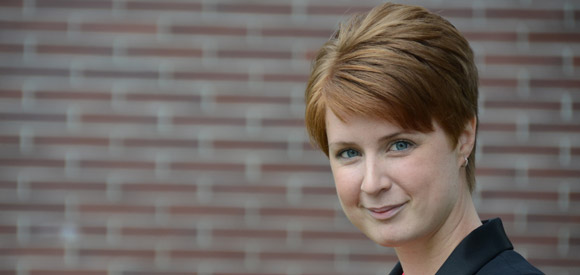
Forensic psychologist student Leanne ten Brinke has studied 78 emotional, televised pleas to find indications about who is lying and who is not.
UBC researchers able to tell who is being dishonest
It is a scenario that has played across television screens countless times over the years: a tearful plea for the safe return of a loved one.
But, is the person telling the truth, or attempting to cover up their own dirty deed? Leanne ten Brinke knows what to look for.
The forensic psychologist student studying at the University of British Columbia’s Okanagan campus spent the last six years working with psychology professor Stephen Porter to study 78 cases in Canada, the U.S., U.K. and Australia of people pleading for the safe return of a loved one.
In half of the cases, the people were lying and were proven to be responsible for the disappearance. Through extensive frame-by-frame study of their pleas, ten Brinke and Porter established solid guidelines to tell if their plea is genuine. Ten Brinke hopes the information they have developed will help law enforcement in future cases.
“We looked at body language as well as verbal and linguistic cues,” says ten Brinke. “Close attention to the face can give lots of clues. They are trying to look really sad and distressed so they are faking their emotions.”
Ten Brinke said there are some facial muscles a person cannot easily control and when they try to look sad, they often end up looking surprised.
“They are also trying to hide how they really feel. They have to do a real acting job, but it is just too much for them,” she says, adding deceivers tend to smile as well, something a person in genuine distress would not do. “The deceiver also gives shorter pleas. That is a pretty common finding.”
It is also common for the deceiver to use phrases such as ‘If you hear this,’ or ‘If you are out there’ implying the missing person might not still be alive.
While ten Brinke said they cannot simply tell police a person is outright lying, they can point out indicators and characteristics that could show the person is not being truthful.
In this study, ten Brinke and Porter conducted the most comprehensive study of high-stakes deception ever done.
“Most previous deception studies have focused on lies that are trivial relative to those about crime or terrorism and this study offers new insights into high-stakes lies,” says Porter. “The problem of high-stakes lies cannot be over-stated, as they occur in politics, business and criminal contexts.”
The same group recently found that psychopaths – who have a high recidivism rate and do not benefit from treatment – are more than twice as likely as their non-psychopathic counterparts to be granted parole after the parole interview (Porter, ten Brinke, & Wilson, 2009). These researchers attributed this pattern to the “Academy Award-winning” performances of psychopaths in the parole hearing, adopting the persona of the remorseful, rehabilitated offender.
Porter says in another study, these researchers also found “psychopathic individuals are able to mimic or fake emotions better than the rest of us, at least to the untrained eye.”
— 30 —